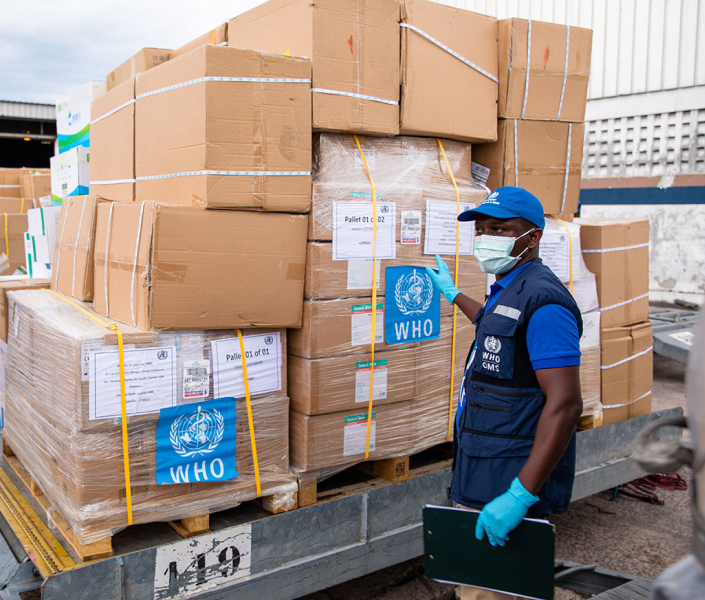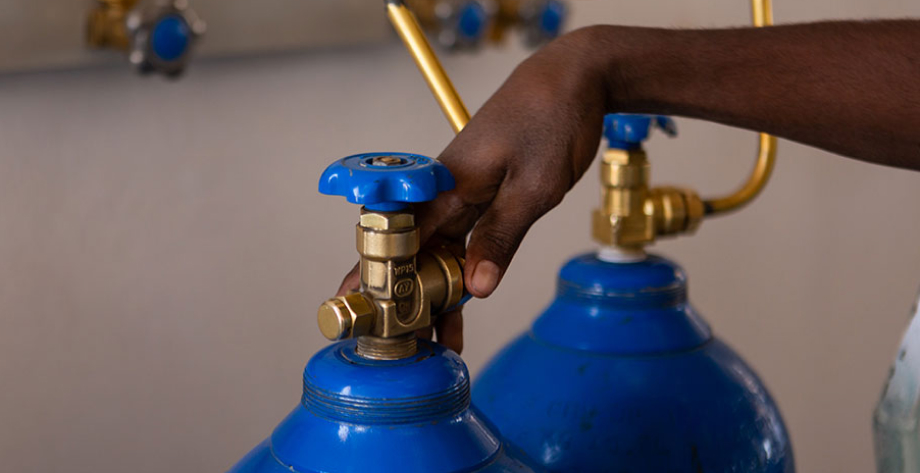Progress report African region 21 - 2.7. Procurement and supply chain

To identify and ensure procurement and distribution of goods in the right quantity, at a high quality and in a timely manner, WHO-AFR worked strategically with countries and suppliers to scale up quality medical oxygen access, essential in the treatment of COVID-19. Working in close coordination, biomedical specialists and technical staff in operations support and logistics, case management, health system continuity, and quality control and procurement, consolidated technical specifications for oxygen (O²), while also ascertaining the status of oxygen plants. While some of this work had already begun in the first quarter of the year, following an intra-action review (IAR) of the United Nations supply portal, the resurgence of the crisis forced both a speed-up and scale-up of actions. For example, with 26 non-operable oxygen plants in Africa, the team developed a protocol for service, repair, and maintenance, along with an O² needs and gaps calculation tool. This tool enables countries to keep track of needs and related expenditures to ensure supply and investment sustainability.
While the frenetic pace to secure supplies witnessed in the first year of the pandemic had somewhat slowed during the first quarter of this SPRP, the WHO-AFR team encountered new challenges. On the supply side, price inflation and variations among countries and suppliers added to market complexity. For example, the price of a 240 cubic feet cylinder of oxygen to treat an adult for roughly a day, may range from US$ 23 in Kenya to US$ 112 in Guinea; in some cases, the price of oxygen has more than doubled. These prices are beyond the reach of most public health facilities across sub-Saharan Africa and make oxygen one of the most expensive treatments in the Region’s health systems. Procuring oxygen in different countries is also complicated by often incompatible oxygen cylinders, and the absence of, or incomplete protocols regarding equipment safety and even treatment dosages.
Moreover, as borders open for trade, and suppliers overcome production constraints, numerous challenges remain. Because oxygen (O² ) is an explosive, full cylinders of the gas may not be distributed by air, meaning longer lead times. Even working double-time, O² suppliers – particularly international – require four to six weeks for delivery. This is time a waiting patient cannot afford. To tackle this issue, WHO-AFR developed a proposal for bulk procurement of oxygen cylinders from international suppliers – with an estimated lead time of 40 days –, which includes local maintenance service agreements. That should also contribute to mitigate WHO-AFR’s difficulties in hiring biomedical engineers and technicians, who are essential personnel in medical oxygen treatment management.
Used to treat hypoxemia at all levels of the health care system, oxygen (O²) is required for the treatment of acute respiratory illnesses such as severe pneumonia, chronic pulmonary diseases, emergencies, and cardiovascular diseases, as well as for surgeries. A plan for a regional stockpile of cylinders and oxygen is being developed, to be hosted at the WHO regional warehouse in China, with three potential sub-hubs in Africa.
Additionally, on the basis of a memorandum of understanding between AFRO, UNITAID and the Clinton Health Access Initiative (CHAI), ACT-Accelerator partners signed agreements with international medical gas companies in the private sector, providing a pathway to increasing access to medical oxygen in low- and middle-income countries during the COVID-19 pandemic. This collaboration with industry aims to overcome fundamental issues such as unstable funding commitments and insufficient infrastructure, all of which have limited the availability of medical oxygen.
Under the agreements signed with the private sector, companies commit to work with ACT-A global health partners to facilitate equitable access to increased oxygen needs, as a consequence of the COVID-19 pandemic. ACT-A, a global collaboration to accelerate development, production, and equitable access to COVID-19 tests, treatments, and vaccines, was launched at the end of April 2020. It brings together governments, scientists, businesses, civil society, and philanthropists and global health organizations (the Bill & Melinda Gates Foundation, CEPI, FIND, Gavi, The Global Fund, UNITAID, the Wellcome Trust, the World Bank, and WHO). Following the launch of the ACT-Accelerator, UNICEF and PAHO became delivery partners for COVAX, its vaccines pillar.

WHO / Hargeisa General Hospital




